Basic Introduction
- Chinese Name: 哈尼族扎勒特/十月年/米索扎
- English Name: Zhalete Festival of Hani Ethnic Minority
Zalet Festival is a grand traditional festival of the Hani ethnic group. “Zalet” is a transliteration from the Hani language, also known as “Dianian,” which means “Big Year.” It takes place in the tenth month of the lunar calendar, hence it is also referred to as “Yila He Shi,” or “October Year.” The festival begins on the first Dragon Day of the tenth lunar month and concludes on the day of the Monkey in the lunar calendar, lasting for five days.
The Hani people practice a form of primitive religion, and the Zalet Festival primarily involves rituals to honor the heavenly gods and ancestors. The celebrations kick off on the first Dragon Day of the lunar month and can last from five to six days, often extending to half a month.
During the festival, pigs and sheep are slaughtered, rice cakes are steamed, and glutinous rice is prepared as offerings to heaven and ancestors. Neighboring villages and guests from other ethnic groups are invited to share in the celebrations. People dress in their finest attire, visit relatives, seek marriage, and brides return to their parental homes with wine, meat, and rice cakes to present to their ancestors as New Year’s greetings.
Daytime activities include swinging, wrestling, spinning tops, singing, and dancing—various entertainment options. At night, bonfires are lit in the village’s grassy areas, and families bring tables filled with food, including meat, rice cakes, and fruits, to share meals with one another, creating an atmosphere filled with friendship and joy.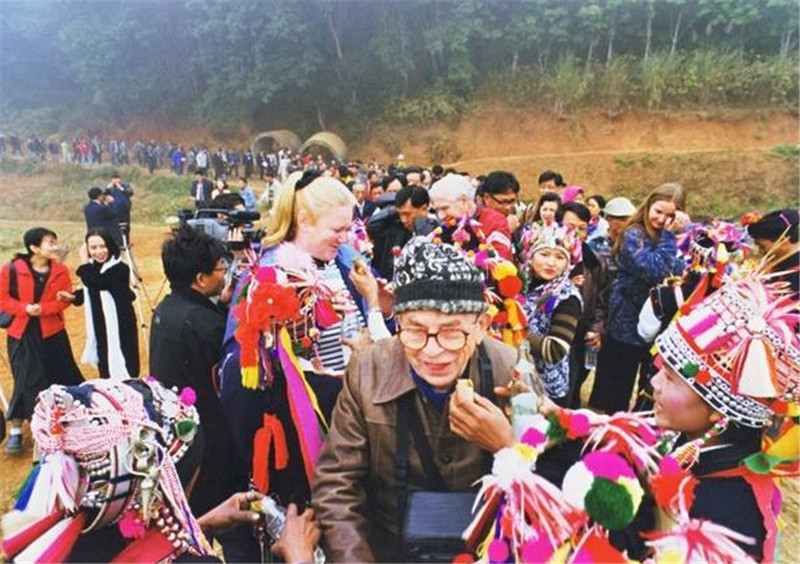
“New Year’s Zalet”
The Hani people’s biggest festival is the “October Year,” which lasts for six days. According to their ancient calendar, the new year begins on the first Dragon Day of the lunar month of October (equivalent to the first day of the Lunar New Year for the Han Chinese). On New Year’s Day, each village is required to collectively slaughter a pig. Regardless of its size, the meat is distributed evenly among households, ensuring that even limited quantities of organs like heart, liver, lungs, intestines, and stomach are shared among every family.
In the afternoon, families use the pork and offal they receive to make offerings to their ancestors. During the festival, families reunite and invite friends from nearby ethnic groups to join in the celebrations. The atmosphere is filled with continuous laughter and joy, and they especially enjoy singing ancient folk songs that narrate the origins of the festival and the history of their people, celebrating the happiness of a bountiful harvest.
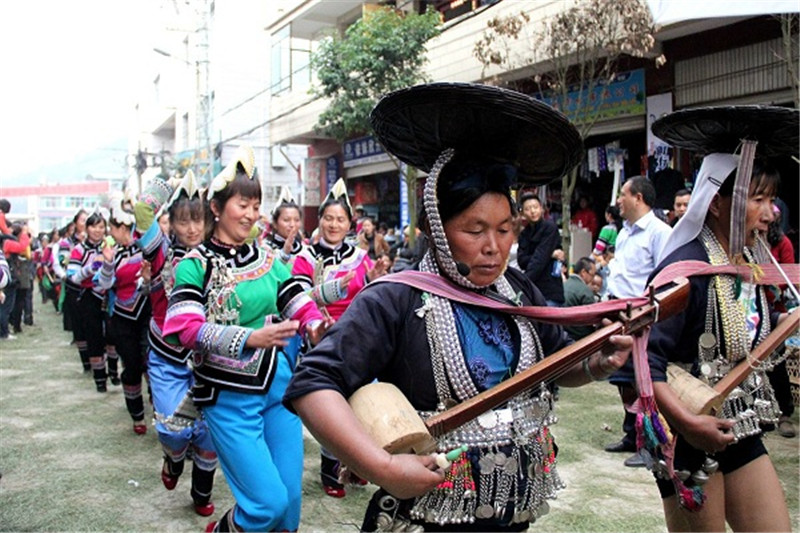
Festival Activities
- On the day of the festival, each family must slaughter a red-feathered rooster in their courtyard and cook it on the spot as an offering to the heavens. All family members are required to eat a piece of the chicken, except for married daughters, who cannot partake.
- Throughout the festival, families are expected to place some food and drinks at the roadside to honor their ancestors.
- Families also prepare rice balls and some cooked meat to present to the eldest elder of their clan, symbolizing their remembrance of their relatives and kin.
- Starting from the third day of the festival, villagers gather in the afternoon outside the home of the priest with their own food and drinks. The priest leads a ceremony that includes traditional singing and dancing. After the rituals, families set their food and drinks in the center of the village for a communal feast, known as the “Central Square Banquet,” where everyone drinks, shares blessings, and enjoys entertainment together.
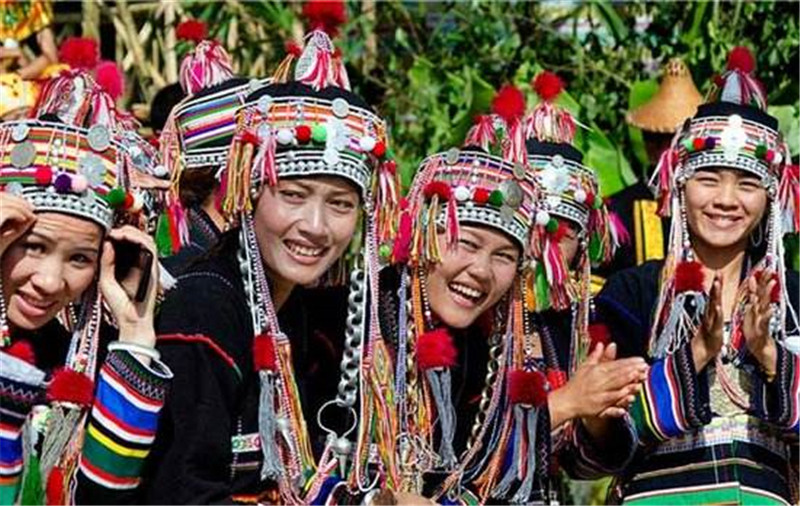
Basic Introduction of The Festival
Chinese Name: 傣族巡田坝节
English Name: Xuntianba Festival of Dai Ethnic Minority in Lvchun County, Honghe
Location: Luxi Couty, Yunnan Province
This is a unique traditional festival of the Dai people in the Qimaba area of Luxi County. It is held annually on the thirteenth day of the first lunar month and lasts for one day.
On the morning of the thirteenth day, as the sun shines on the water towns of the Dai, the melodious and graceful Dai men and women don their festive attire and gather under the large banyan tree in the center of the village. The sound of gongs fills the air, and singers hold fragrant rice wine, raising their voices to sing spring welcoming songs and seasonal melodies. The crowd dances to the rhythm of the drums, and the entire area is alive with joy. The song and dance festival continues until the sun reaches its peak in the sky.
At this time, an elder announces, “The Field Patrol has begun!” Instantly, those enchanted by the singing and dancing form an orderly line: eight young people leading the way with colorful flags, followed by others playing trumpets; some beat drums and gongs while others set off firecrackers and gunpowder, gradually making their way toward the fields. After following the designated route, the people gather to formulate village regulations and agreements for the busy spring plowing season, ensuring that the spring planting can be completed in accordance with the seasonal schedule.
The Local Activities of the Festival
- Traditional Dress and Gathering: On the morning of the festival, Dai men and women dress in their traditional, colorful attire and gather in the village center. The atmosphere is festive and lively, setting the stage for a day of celebration and community spirit.
- Singing and Dancing: As part of the festivities, local singers perform traditional songs, including spring welcoming songs and seasonal melodies. These performances are often accompanied by lively dancing, with participants moving to the rhythms of drums and gongs, creating a joyful and spirited environment.
- Offering Rice Wine: An important aspect of the celebration involves the sharing of fragrant rice wine. Singers often offer this wine to the audience, symbolizing hospitality and community bonding as everyone joins in the festivities.
- Field Patrol Ritual: An elder typically announces the start of the “Field Patrol.” Participants organize into an orderly procession, with young people leading the way, holding colorful flags. The procession is accompanied by sounds from trumpets, gongs, and firecrackers, reflecting the festive mood and cultural heritage.
- Community Regulations for Spring Plowing: After completing the procession, villagers gather to discuss and establish regulations for the upcoming spring plowing season. These discussions are crucial for ensuring a coordinated effort in agricultural activities, demonstrating the community’s commitment to cooperation and sustainability.
- Culinary Traditions: Alongside the celebrations, traditional Dai dishes may be prepared and shared among community members, representing the rich culinary heritage of the Dai people and the importance of food in bringing people together.
- Youth Interaction: The festival is also a time for socializing, especially for young men and women, who seize the opportunity to mingle, express their affections, and form connections amid the festivities.
Introduction of The Festival
- Chinese Name: 傣族送龙节
- English Name: Songlong (Dragon Worship) Festival of Dai Ethnic Minority
The Long Sending Festival is a unique celebration of the Dai people in Menglong, Xishuangbanna. It is held during prosperous times, when the crops are abundant and life is flourishing. The term “sending the dragon” refers to presenting offerings to the Dragon God, symbolizing a request for blessings and care from the Dragon God, which in turn brings good fortune. Therefore, this festival serves as a way to express gratitude to the Dragon God.
Typically, the Long Sending Festival takes place in January of the Gregorian calendar, before the Spring Festival, and is organized by the local Buddhists. Each household participates by offering various items: some provide food, while others contribute clothing, and wealthier families may offer gold and silver jewelry, coins, or blankets. Everyone is welcome to join, and there are few restrictions for outsiders.
After all kinds of offerings are brought to the Buddhist temple, the temple organizes skilled artisans to craft a “Dragon Palace.” The local Buddhist priest conducts prayers and rituals, placing the gifts from each household atop the “Dragon Palace.” All participants in the ceremony beat gongs and drums as the “Dragon Palace” is carried to the Menglong River. Following another ritual, the “Dragon Palace” is placed on a bamboo raft, which then drifts away while surrounded by prayers and chants, symbolizing the act of “sending” these offerings to the Dragon God.
The Local Activities of The Festival
- Preparation and Offerings: In the days leading up to the festival, families prepare various offerings, which may include food, clothing, and other goods. These items are meant to honor the Dragon God and express gratitude for past blessings. Wealthier families often prepare more elaborate offerings such as jewelry and crafted goods.
- Dragon Palace Construction: Local artisans gather to build a ceremonial structure known as the “Dragon Palace.” This intricately crafted representation serves as the focal point for the worship and is adorned with offerings brought by the community.
- Procession to the River: On the day of the festival, participants don traditional attire and join in a joyous procession, often accompanied by music from traditional instruments, dancing, and singing. The procession typically moves through the village, leading to the local river.
- Rituals and Prayers: Upon reaching the river, the community gathers around the Dragon Palace. The local Buddhist monk or elder conducts prayers and rituals, invoking the blessings of the Dragon God. This may include chanting and the ringing of bells and gongs, calling for protection and prosperity for the village.
- Placement of Offerings: The prepared offerings are then placed on the Dragon Palace. Following the rituals, the community participates in a ceremony where the Dragon Palace is decorated with the offerings, symbolizing the community’s wishes and gratitude.
- Drifting the Dragon Palace: After the ceremonies, the Dragon Palace is placed on a bamboo raft. The raft is blessed and then released into the river, signifying the act of sending offerings to the Dragon God. As the raft drifts away, community members chant and pray, wishing for good fortune and a plentiful harvest.
- Celebratory Activities: The festival is filled with celebratory activities, including traditional music, dance performances, and local games. It’s a time for socializing, with families and friends coming together to enjoy food, laughter, and camaraderie.
- Culinary Traditions: Traditional dishes, often prepared for communal sharing, play a significant role during the festival. Special meals featuring local ingredients engage everyone in the spirit of hospitality and community.
Basic Introduction
- Chinese Name: 傣族情人节/花街节/赶花街
- English Name: Huajie (Flower Street) Festival of Dai Ethnic Minority
The Huajie Festival, also known as the Flower Street Festival, is one of the most important and vibrant celebrations for the Dai ethnic minority, primarily observed in Yunnan Province, China, particularly in areas like Xishuangbanna. This festival is celebrated annually, usually around the beginning of the lunar calendar, typically in April. The Huajie Festival has its roots in agricultural traditions, marking the arrival of spring and the planting season, as well as celebrating the abundance of flowers and the beauty of nature.
The festival is also linked to Buddhist beliefs, reflecting the Dai people’s close connection with Buddhism and nature. It is a time of renewal, hope, and joy, symbolizing new beginnings and agricultural prosperity.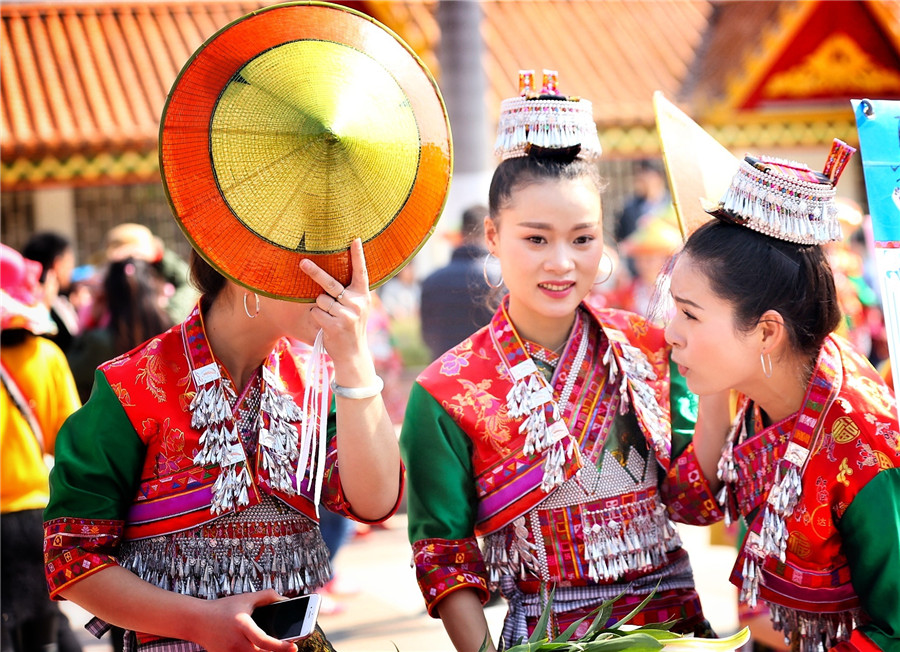
Significance
- Celebration of Nature: The festival acknowledges and celebrates the beauty of nature, particularly the blooming flowers that symbolize prosperity and fertility.
- Cultural Identity: It reinforces the cultural identity of the Dai people, showcasing their traditions, music, dance, and culinary practices.
- Social Cohesion: The festival promotes community bonding as families and friends come together to celebrate, share food, and participate in festivities.
- Agricultural Prosperity: It serves as a way to pray for good weather and a successful harvest in the coming year, highlighting the agricultural roots of the Dai culture.
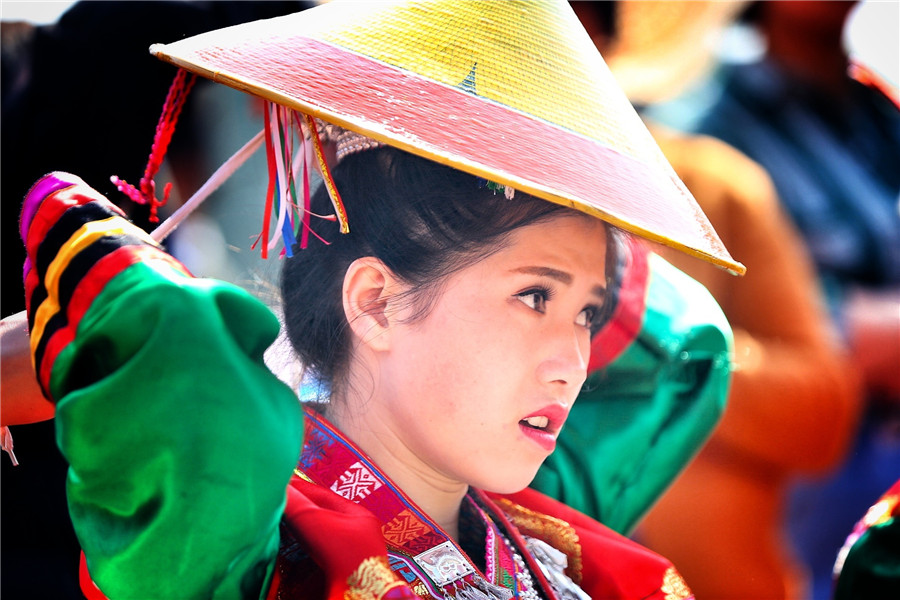
Local Activities
- Flower Decoration: Leading up to the festival, participants gather flowers from around the region. The festival is named after this floral abundance, with families adorning their homes, altars, and public spaces with vibrant flowers. Flower decorations are a central theme of the celebration.
- Parades and Processions: The festival often features colorful parades with people dressed in traditional Dai clothing. Participants walk through the streets carrying beautiful floral displays, showcasing the wealth of blooms in the region.
- Cultural Performances: Traditional music, dance, and theatrical performances take center stage during the festival. Different groups perform folk dances that reflect the rich oral traditions and stories of the Dai culture. The performances often incorporate elements of their agricultural practices and myths.
- Water-Splashing: In many Dai celebrations, water is an essential element, symbolizing purification and blessings. During the Huajie Festival, participants engage in water-splashing activities, which are believed to bring good fortune and wash away misfortunes.
- Offerings and Prayers: As with many ethnic celebrations, honoring ancestors and deities is crucial. Offerings of food, flowers, and incense are made in temples or at family altars. Prayers for a prosperous year ahead are common during the festival.
- Traditional Cuisine: Food plays a significant role in the festivities. Families prepare traditional dishes, often incorporating fresh, local ingredients. These meals are shared amongst family and friends, fostering a spirit of community and hospitality.
- Games and Competitions: Various fun games and competitions, often involving traditional sports and activities, are held during the festival. These not only entertain but also enhance community spirit and bonding.
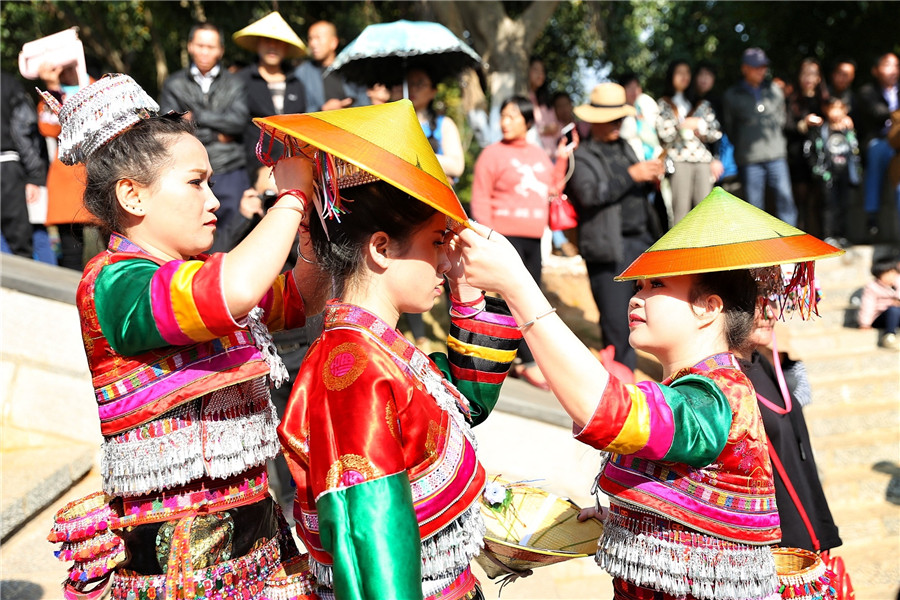
Basic Introduction
Chinese Name: 傣族关门节/进洼
English Name: Guanmen (Closing Door) Festival of Dai Ethnic Minority
The “Closed Door Festival,” known in the Dai language as “Hao Wasa,” is a traditional festival of the Dai ethnic group and other ethnic minorities. It occurs on the 15th day of the ninth month in the Dai calendar (which corresponds to the sixth month of the lunar calendar).
On this day each year, the entire village of the Blang ethnic group honors Buddha by going to the temple to listen to teachings and offer water. Men and women aged 40 and over are required to stay at the temple, while all production activities in the village cease for one day. In the evening, the youth beat drums and dance. Three days later, the temple doors are closed for three months, during which the monks recite scriptures day and night, and no one is allowed to leave the temple.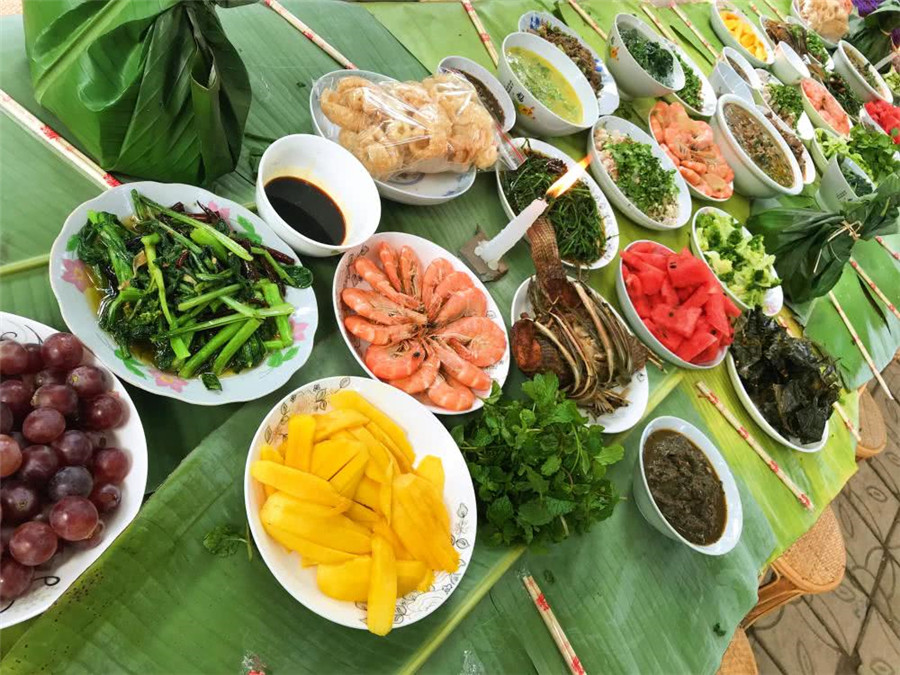
Name Explanation:
The “Closed Door Festival,” referred to as “Hao Wasa” in the Dai language, means entering the period of the transmission of Buddha’s teachings. It is set for the 15th day of the ninth month in the Dai calendar (mid-June in the lunar calendar). The day marking the end of the three-month period of teaching (which is the 25th day of the twelfth month in the Dai calendar) is known as the Open Door Festival. In the Dai language, the Open Door Festival is called “Ao Wasa,” which means stepping out of the period of transmitting Buddha’s teachings. The day on which the teaching begins is considered a festival and is quite interesting. It is generally believed that the Closed Door Festival and the Open Door Festival originated from the ancient Indian Buddhist practice of retreat during the rainy season, with the three-month closure being viewed as a period of rest and fasting for the faithful.
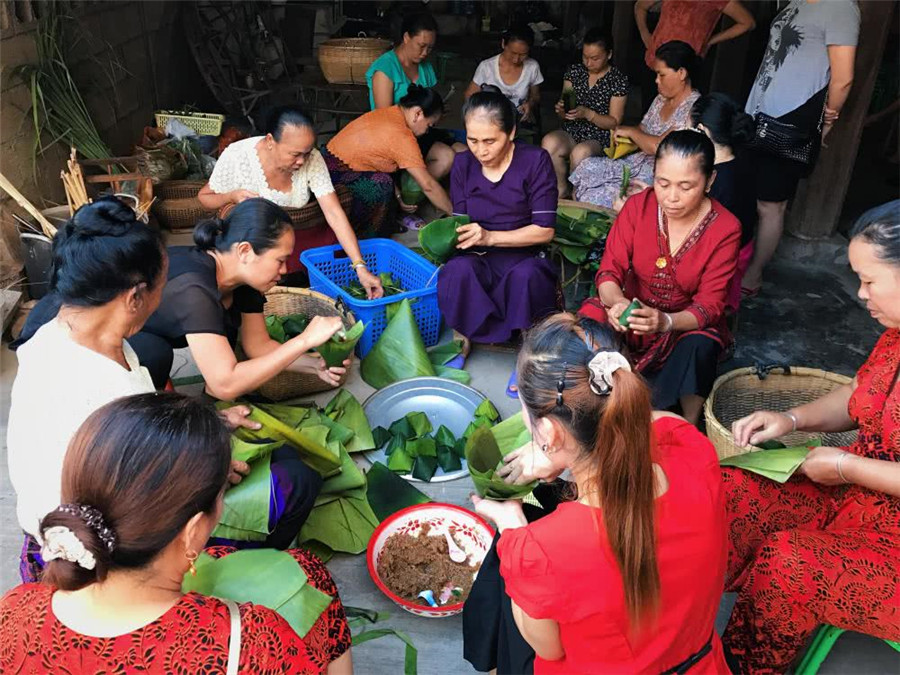
Religious Festivals:
The Closed Door Festival is a traditional holiday celebrated by the Dai, Blang, De’ang, and some Wa ethnic groups. It occurs on the 15th day of the ninth month in the Dai calendar (mid-June in the lunar calendar). The festival originates from the ancient Indian Buddhist practice of retreat during the rainy season, which is similar to the “Qi Xia” (summer retreat) observed in Central Plains Buddhism.
The Closed Door Festival and the Open Door Festival are religious holidays for the Dai, Blang, Achang, De’ang, and other ethnic groups that follow Theravada Buddhism. The Dai’s Closed Door and Open Door Festivals are especially typical, representative, and rich in religious significance.
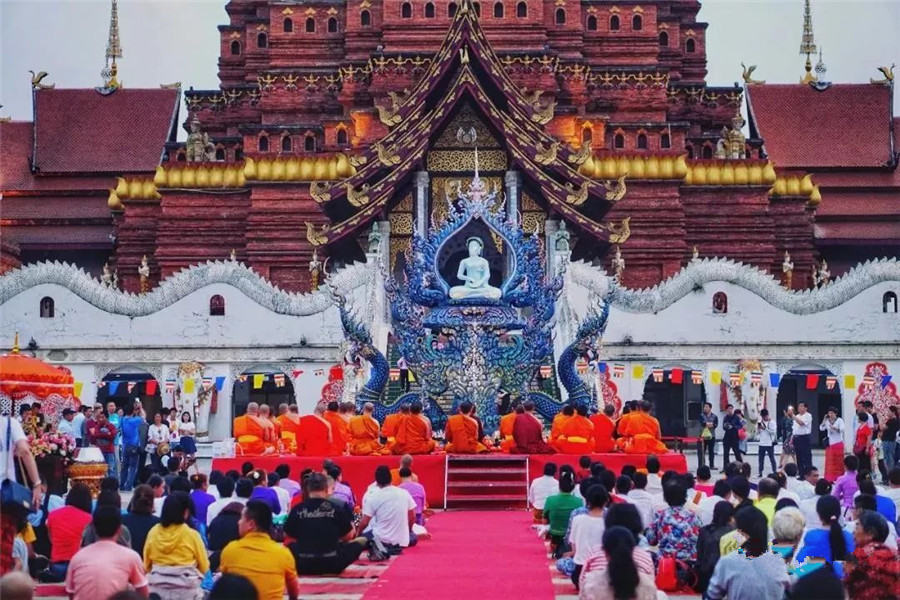
Festival Introduction:
The festival originates from the ancient Indian Buddhist practice of retreat during the rainy season, similar to the “Qi Xia” (summer retreat) observed in Central Plains Buddhism. The three months from the Closed Door Festival to the Open Door Festival mark a period of rest and fasting in Theravada Buddhism. During this time, monks reside in monasteries for pure study, receive alms, and are prohibited from going out for leisure. The Dai people have a strong belief in Buddhism, and lay followers often visit monasteries to sit quietly, listen to teachings, and venerate the Buddha with offerings of food, fresh flowers, dried goods, silver coins, or paper money every week. Starting from the Closed Door Festival, Dai families close the doors to love and marriage, dedicating themselves to labor in agriculture, working hard to ensure a good harvest of their main crops for the year.
In the Dai language, it is called “Jin Wa,” meaning “the Buddha enters the temple.” This traditional religious festival of the Dai in Yunnan starts on the 15th day of the ninth month in the Dai calendar (mid-June in the lunar calendar) and lasts for three months. According to legend, in the ninth month of the Dai calendar, the Buddha goes to the West to preach to his mother and does not return to the human realm for three months. During one of these times, while the Buddha was preaching in the West, thousands of his disciples went to the countryside to spread the teachings, which damaged the villagers’ crops and hindered their production. The local people were very dissatisfied, and when the Buddha learned of this, he felt troubled. From then on, whenever the Buddha went to the West to preach, his followers were gathered together and instructed not to go anywhere during these three months, allowing only for repentance to atone for their previous wrongs. Thus, it is called the “Closed Door Festival.”
Once the Closed Door Festival begins, the farming season becomes busy. To focus on production work, people establish numerous regulations, such as prohibiting young men and women from dating or engaging in marriage activities; monks are not allowed to go out freely; those who go to worship the Buddha cannot stay away from their families or spend the night at others’ homes; and no one is allowed to enter the Buddha’s shrine or take anything from it. It is only after three months, during the Open Door Festival, that people return to their normal activities as they were before the Closed Door Festival.
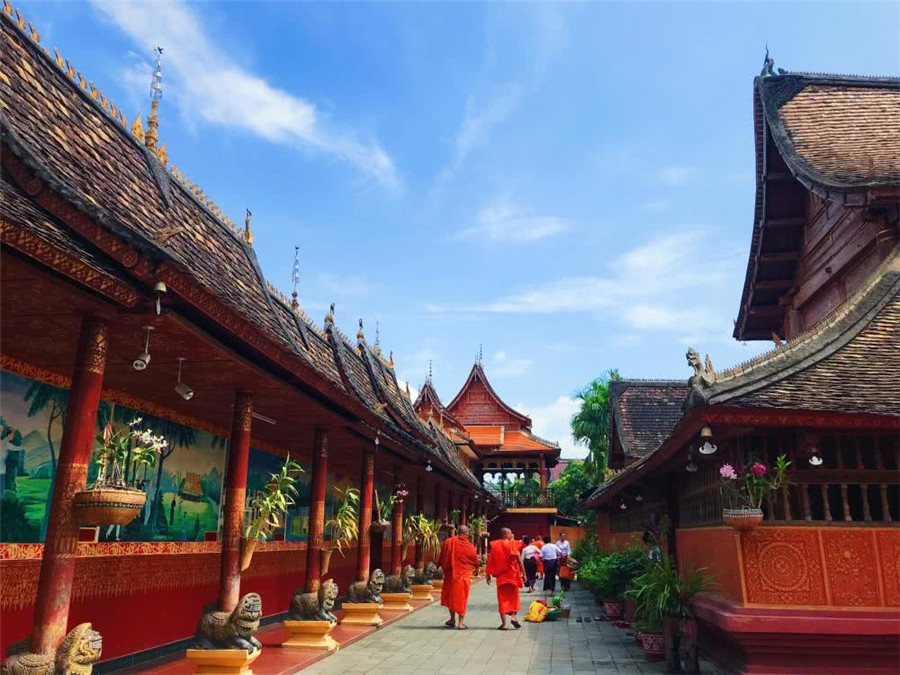
Folk Customs:
On the day of the Closed Door Festival, the Dai villages are filled with a festive atmosphere. Early in the morning, every household is busy steaming colorful glutinous rice and making cakes, preparing offerings for the Buddha or gifts for friends and family, and organizing feasts and communal meals.
During the three months of the Closed Door Festival, visiting temples to listen to teachings from senior monks is a major activity for the community. The content covered by the monks often includes stories of enlightened beings, used to educate the community and inspire them to aspire to Buddhahood. Throughout the three months from the Closed Door Festival to the Open Door Festival, Dai families do not hold weddings, build new houses, or travel far; instead, they concentrate on production, regularly visiting temples to worship and make offerings to the Buddha. Devout elders consciously practice fasting, wearing white clothing and white headscarves, and some even stay overnight in the temple. Every seven days, a worship activity is held during which attendees bring food, wax offerings, and pay homage to the Buddha, listening to the senior monks recite scriptures and explain teachings, precepts, and stories from Buddhist texts.
A significant event, known as “Dan Tan” (offering scriptures), is also held during this period. Upon the completion of the three months of the Closed Door Festival, on the 15th day of the twelfth month in the Dai calendar, celebrations for the Open Door Festival take place. Similar to the Closed Door Festival, worshippers bring paper flowers, wax offerings, flower trees, food, and coins to the temple, holding grand ceremonies of homage to the Buddha and chanting. They also partake in alms meals, communal dining with the monks, and the same lively and joyous atmosphere as the Closed Door Festival. At night, fireworks are set off in the temple, sky lanterns are released, and dances are performed, parading through the villages to celebrate the end of the retreat and signify the transition from the Closed Door period to the Open Door period. After this night, the Dai villages return to their romantic and vibrant daily lives; monks can leave the monastery, followers can travel far, Dai families can build new houses, young men can court young women, and couples can hold weddings.
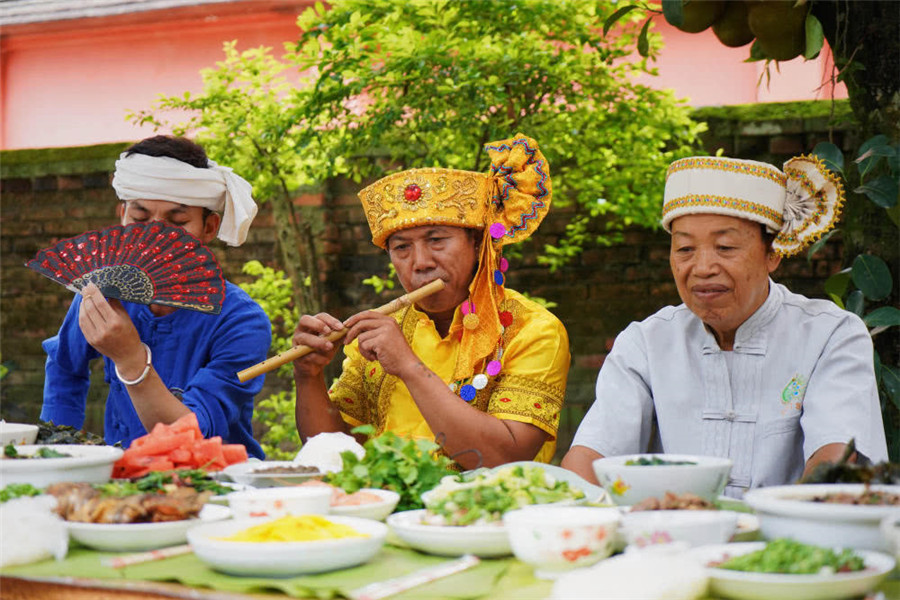
Purpose of the Festival:
The Dai people’s Closed Door Festival occurs in mid-July, coinciding with the busy agricultural season. The purpose of holding the Closed Door Festival is to prohibit people from going out and to prevent young people from engaging in romantic relationships, allowing them to focus their energies on productive work. During this period, those who follow Buddhism also engage in religious activities—making offerings to the Buddha.
The Closed Door Festival lasts for three months, after which the Open Door Festival arrives (in mid-October). By this time, the busy farming season has passed, allowing people to go out freely, and young people can engage in romantic relationships and marry. After the Open Door Festival, cultural and entertainment activities among the Dai people also increase.
Zhangjia Sandui Village(章家三队村)
Zhangjia Sandui Village is located at Bulangshan Town(布朗山乡) of Menghai County(勐海县) in Xishuangbanna, a mountainous area. Zhangjia is a Dai name, Zhang means “can, be able to”, while Jia means “balcony”, so the whole name is meaning “be able to make balconies ”. The villagers of the Zhangjia Sandui Village used to serve for the ruler, and they were skilled in making balconies.
Covering an area of 9.85 km², Zhangjia Sandui Village is situated in the south of Bulangshan mountain, 18 KM away from the Bulangshan Town, with an elevation of 1100 meters. The annual temperature is 18-21℃, average precipitation is 1,374 mm annually, so this is a good place to plant crops, such as rice, tea and so on.
Chinese Name: 勐海章家三队茶区
English Name: Zhangjia Sandui Tea Plantation in Menghai County, XishuangBanna
Keywords: Zhangjia Sandui Tea Plantation in Menghai County, XishuangBanna Menghai attractions, tea culture tour, what to visit in Menghai
Location: Located at Zhangjia Village of Bulangshan Town in Menghai County, XishuangBanna
Admission Fee: Free
Opening Hours: All the day
Website: http://www.ishuocha.com/baike/zjsd/
Descendants of Pu people, Bulang Village(濮人后裔,布朗村寨)
Zhangjia Sandui Village is divided from Zhangjia Laozhai Village(章家老寨) in Bulang mountain(布朗山). Bulang ethnic group used to living in the basin of Lanchang River , they are the descendants of Pu people, which is the first one to find wild tea and utilize it, also it is the earliest one to cultivate tea, so they are called “ancient tea farmers”.
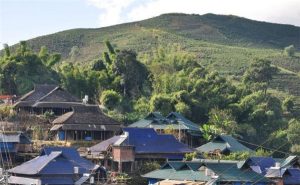
The Tea of Zhangjia Sandui Village
The price of the tea in Zhangjia Sandui is much more expensive compared with the general tableland tea. We used to consider the level of tea processing, when the price of the tea in Zhangjia Sandui Village was cheap. There was a widespread words, “Tea with a Bulang flavor”, that was the smell of cigarettes, of burnt food. The taste was awful, we just hoped that it could improve a lot when we come next time. The Tea of Zhangjia Sandui Village was called “Xiaobanzhang(小班章)”. In 2014, old comrade Bulang, he used the fresh tea of an ancient tea tree in the Zhangjia Sandui tea area to make compressed tea. Although the smell of the compressed tea is not so good as “Laobanzhang”, it has its elegant flavor. “Laobanzhang” is a kind of heavy bitter tea, after a long time steeping, you can not feel its astringency, so as your mouth can not feel the constriction, on the contrary, you can get a feeling of sweet and pleasant. While the tea of Zhangjia Sandui Village is also heavy bitter tea, you can feel its bitter, but the mellow taste with a little constriction feeling will back to your tongue immediately.
Since 2000, the concept of small producing areas was becoming popular. “Dabanzhang tea producing area” which was the core area of producing top-quality Pu’er tea in Menghai, was pushed forward to the stage, as a result, the price of the tea made in Zhangjia Sandui was becoming higher. The first tea factory, Menghai Runyuanchang Tea Factory(勐海润元昌茶厂),was built by Guangdong tea merchants in Dabanzhang area. This factory is just next to Zhangjia Sandui Village.
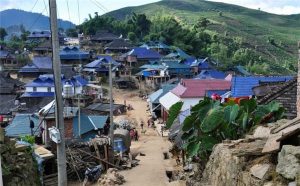
Menghai Runyuanchang Tea Factory(勐海润元昌茶厂) kept a good relationship with villagers of Zhangjia Sandui Village, when tea harvest time coming, in order to save time, the local people will send the well-quality tea to the factory, as well as sweet white gourd and pepper. After the price going up, the villagers had a stable income, they seldom went out to do work for others, many of them stayed in village to cultivate tea. Tea mountain, tea factory, tea merchants and planter get on well with each other.
Attraction Transportation:
We can take a shuttle bus from Menghai County to Bulangshan Town, then we need to transfer a local mini-bus to go to Zhangjia Village.
Attraction Travel Tips:
· Best season to travel: March – May
My name is Pu Min, an English-speaking tour guide for over 10 years working experience , at the same time, I am also an university administrator and an international tour leader. There are blood of three nationalities on my body,that is Bai,Yi,Han. I have my own unique views on Yunnan and its neighboring Southeast Asian countries,because I’m very familiar with these places.
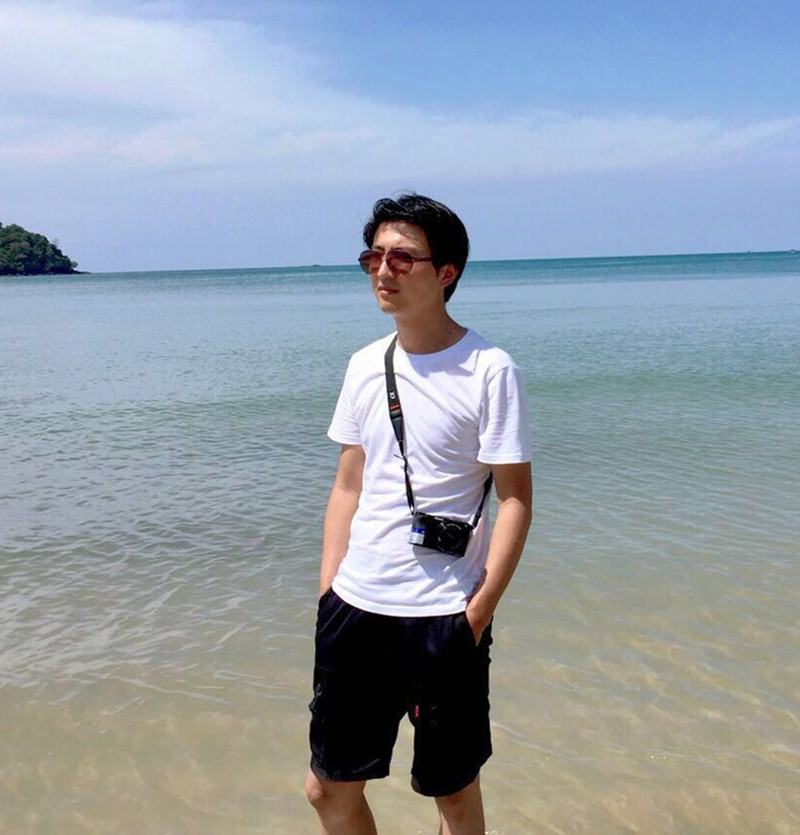
Experience:
- Over 10 years of experience as an English-speaking tour guide.
- University administrator and international tour leader.
Background:
- Of Bai, Yi, and Han descent.
- Holds unique views on Yunnan and neighboring Southeast Asian countries due to extensive familiarity with these regions.
Specializations:
- In-depth knowledge of Yunnan province.
- Expertise in guiding international tourists and understanding their needs.
Tour Guide Service Areas and Tour Routes:
- Dali City Tour
- Comprehensive exploration of Dali’s cultural and historical landmarks.
- Dali-Weishan Old Town-Donglianhua Village-Dali
- Visit the ancient town of Weishan and the traditional Donglianhua Village.
- Dali-Jizu Mountain-Dali
- Journey to Jizu Mountain, known for its scenic beauty and cultural significance.
- Dali-Shaxi Old Town-Shibaoshan Mountain-Lijiang
- Tour the historic Shaxi Old Town, the stunning Shibaoshan Mountain, and Lijiang.
- Dali-Nuodeng Old Town-Shaxi Old Town-Lijiang
- Discover Nuodeng Old Town, Shaxi Old Town, and Lijiang.
- Dali-Nujiang Grand Canyon
- Experience the breathtaking Nujiang Grand Canyon.
- Dali-Baoshan-Tengchong-Ruili-Mangshi
- Explore the diverse regions of Baoshan, Tengchong, Ruili, and Mangshi.
- Dali-Lincang Tea Mountain and Tea Culture Tour
- Immerse in the tea culture and scenic tea mountains of Lincang.
Overview
- Chinese Name:剑川县白族青姑娘节
- English Name: Qingguniang Festival (Women’s Festival) of Bai Ethnic Minority in Jianchuan County, Dali
- Location: 鹤庆县甸南镇杨岑村/Yangcen Village, Diannan Town, Heqing County.
The Qingtai Girl Festival is celebrated on the 15th day of the first month in the lunar calendar each year. The Qingtai Girl Festival is a commemorative song and dance festival for Bai women. Its main content narrates the hardships and misfortunes experienced by Bai women in the old days, expressing their hopes and aspirations for a better life. It is popular in the areas of Yangcen and Diannan in Jianchuan County, and the festival takes place on the 15th day of the first month of the lunar calendar.
Introduction
On this day, Bai women from Diannan, Yangcen, and other areas in Jianchuan County participate in the activities. They gather together, each contributing money, and hire someone to create an idol of the Qingtai Girl. The idol is dressed in traditional Bai attire and is placed on a swing where the women gather around to dance and sing, enjoying themselves. Afterwards, they hold a memorial ceremony by the Hawei River. In the evening, one person holds the idol of the ‘Qingtai Girl’ as a guide, followed by the other women as they walk through the village’s streets, singing the narrative long song ‘Qingtai Girl.’ They then return to a designated area in the village to swing with the idol until late at night. Finally, they place the ‘Qingtai Girl’ into the Hawei River.
The activities of the Qingtai Girl Festival are conducted in the form of singing and dancing to perform a Bai folk epic that reflects the story of the Qingtai Girl. The content tells the tragic tale of a once innocent girl whose parents arranged her marriage, suffering abuse at the hands of her husband and mother-in-law. One night, she hangs herself from a swing but is rescued by her companions. However, after returning home, she is brutally beaten and ultimately, unable to endure the torment, she jumps into the Hawei River to take her own life
It is said that the Qingtai Girl jumped into the sea on the 15th day of the first lunar month, which is why this day has become known as the ‘Qingtai Girl Festival’ every year. On this occasion, the village girls gather together to select the most beautiful, smartest, kindest, and most melodious girl from their village to portray the Qingtai Girl. Some villages use an idol made of bamboo and paper, painted in bright colors, to represent the Qingtai Girl.
As the sun sets, all the women of the village escort the ‘Qingtai Girl’ from the river into the village, holding hands and singing and dancing in rhythm as they traverse the streets and alleys until they reach the village square. They then encircle the ‘Qingtai Girl,’ singing the entire long poem that recounts her painful experiences as a form of mourning, until the moon sets in the west.
She cries out in anger: ‘The shadows on the wall cannot become a painting, and trying to fish for the moon in the water is futile. A myriad of iron chains binds my body, yet they cannot lock my heart!’ Under the historical conditions of her time, she had no choice but to jump into the Hawei River, using death to resist the cannibalistic feudal marriage system. To commemorate the Qingtai Girl, Bai women gather every year on the 15th day of the first lunar month to hold memorial activities. In the evening, they carry the idol of the Qingtai Girl through the village’s streets, singing the long poem that narrates her tragic fate.
The long poem ‘Qingtai Girl’ is mournful and moving, divided into five main sections: ‘Elegy,’ ‘Love Song,’ ‘Suffering Song,’ ‘Dirge,’ and ‘Illusion Song.’ It begins with the ‘Elegy’ calling to the Qingtai Girl, ‘Sister Qingtai, today the sisters reunite, by the Hawei River we come to honor you, telling of your sorrows,’ and continues until the ‘Illusion Song,’ which includes: ‘Camphor tree, oh camphor tree, beside the Hawei River stand so tall, cut down a big tree to build a boat, and row to the South China Sea.’
Each line is heart-wrenching and evocative. This long poem, with its distinct ethnic style and unique artistic charm, has become a classic work in the history of Bai literature. It has been passed down among the people through the traditional customs of the ‘Qingtai Girl Festival,’ standing out as a remarkable flower of Bai culture.
Local Activities
- Selection of the Qingtai Girl:
- The festival features the selection of a young woman from the community to represent the Qingtai Girl, a central figure in the festival’s lore. This woman is typically chosen based on her beauty, intelligence, character, and singing ability.
- Idol Representation:
- In some villages, an idol made of bamboo and paper, adorned with colorful decorations, symbolizes the Qingtai Girl. This idol plays an important role in the festivities.
- Procession and Celebratory Activities:
- As the sun sets, the women of the village escort the Qingtai Girl through the streets, hand-in-hand, while singing and dancing. The procession culminates at the village square, creating a vibrant atmosphere filled with music and movement.
- Recitation of the Long Poem:
- The heart of the festival lies in reciting a long epic poem that tells the tragic tale of the Qingtai Girl. This poem is divided into several sections, including elegies and love songs, expressing themes of sorrow, love, and resistance against oppressive traditions.
- Rituals and Mourning:
- The festival incorporates elements of mourning for the Qingtai Girl, who in the story endured great suffering due to her forced marriage. The recitation of her story serves as a reminder of her plight and an expression of solidarity among the women.
- Cultural Significance:
- The Qingguniang Festival is not only a celebration of womanhood but also a preservation of Bai cultural identity. It emphasizes themes of resilience, community, and the struggles faced by women throughout history.
- Final Rituals:
- The festival often concludes with the ceremonial immersion of the idol in the Hawei River, symbolizing the release of the Qingtai Girl’s spirit and the renewal of hope within the community.
Chinese Name:剑川县八月骡马物资交流会
English Name: Mule and Horse Trade Fair (August Fair) in Jianchuan County, Dali
Chinese Name:白族葛根会
English Name: Pueraria Montana (Gegenhui) Festival of Bai Ethnic Minority in Dali
Pueraria montana (葛根 in Chinese) is a species of plant in the botanical family Fabaceae. At least three sub-species (alternatively called varieties) are known. It is closely related to other species in the genus Pueraria (P. edulis and P. phaseoloides) and the common name kudzu is used for all of these species and hybrids between them. The morphological differences between them are subtle, they can breed with each other, and it appears that introduced kudzu populations in the United States have ancestry from more than one of the species.
葛根会是大理白族岁时风俗,农历正月初五,一年一度的“葛根会”在崇圣寺三塔下的三文笔村如约而至,四面八方的群众都来这里买葛根、吃葛根,共赴这场大理白族的传统盛会。 上午9点,会场就挤满了前来做买卖和赶会的人,在长达千米的街道两侧摆满了大大小小近百个卖葛根的摊子。
葛根会相传始于唐代,民国《大理县志稿》有记载: “初五日,城西北三里三塔寺游人如蚁,留连胜境,倘佯登眺, 襟抱豁然,有卖春酒、烧猪肉、生螺黄、生螺狮、凉米线,供人瞰吹醉饱与薄片葛根者,故俗称葛根会云。”
大理白族葛根会
葛根是产于大理地区的一种藤本植物,葛根,又名薯条、粉葛。因为其根块含有大豆黄酮、淀粉、异黄、葛素等,有壮阳生泽、健脾开胃的作用。葛根会以交易葛根和游览三塔寺风光为主,同时有名食小吃供人享用,还有卖小娃娃玩具等。
葛根会当天从文笔村通向三塔寺的街道两侧都是卖葛根的摊子,上摆葛根、砧板、菜刀和土碱。凡是到场赶会的各族群众都要购买葛根,卖者将葛根切成片售给买者,买者就用葛根沾上碱食用,并把葛根带回家中,供家人食用。
葛根会以前主要是以交易葛根为主,而到了今天,已演变成了游览大理风光,品尝有名小吃,还有买东西为主的活动。也许是在春假里的缘故,大多是从外地而来的游客,头戴着在两旁店铺里购买的卷边羊皮帽,还穿了白族的衣衫。游客们为葛根会增添了别样风景,一年一度的葛根会热闹非凡,不容错过,心动了的话赶紧准备下,到大理来参加下一年的葛根会吧。
Chinese Name:大理白族耍海会/捞尸会
English Name: Shuahaihui Festival of Bai Ethnic Minority in Dali
大理洱海沿岸的白族人民,每年农历八月八日都要举办一次传统的耍海盛会。在耍海的日子里,人们只起唢呐,唱着《大本曲》,对着调子,舞着霸王鞭,跳起仙鹤舞,尽情欢乐。同时,举行一年一度的“赛龙舟”活动,龙舟一般用洱海里大型的木船改装而成,在长约十米,宽约三米的风帆上,披红挂绿、张灯结彩。桅杆上扎有五颜六色的“连升三级”的大斗,并拴上铜锣,尾舵上竖有松枝,船舷上画着叱咤风云的“黄龙”和“黑龙”,中间镶嵌一面圆“宝镜”。随着一声号令,各村寨的龙舟竞发,人们唱着赛舟调,祝愿风调雨顺,五谷丰登。
活动
由于起源传说不同,耍海会的时间也有前后,一般三至五天不等。邓川、上关、喜洲一带的耍海时间从农历七月二十三日开始,大理、下关一带的耍海时间从农历八月初八开始,耍海的内容大同小异。邓川、喜洲的白族群众身着民族盛装,聚会于弥苴河两岸和洱海之滨,举行用彩船游河泛海、唱山歌对调子等活动,持续三至五天。会期,家家户户都要接姑娘请客,节日隆重程度 如同过春节。大理、下关沿海的白族群众除举行划船耍海对歌活动外,还要举行规模盛大的龙船比赛活动。赛前,参赛的各村都要彩画龙船,并在船上挂彩和插旗,将龙船装扮得绚丽多姿。比赛时,看谁最先绕过海心的标记转回到岸边,最先回到 者为冠军。观看和助战的人群汇集在海边,摇旗呐喊,为参赛龙舟助威。
历史演变
大理白族耍海和赛龙船历史悠久,据史籍记载,始于南诏、大理国时期,最初与崇奉龙神有关,后来发展为群众性的文化体育活动。党的十一届三中全会之后,随着旅游事业 的发展,大理的要海会不再限于当地的白族群众,来自全国各地和海外的游客、外宾也参加了耍海活动,使节日的规模更大 更热闹。
Chinese Name:白族梨花会
English Name: Pear Blossom Festival of Bai Ethnic Minority in Dali
梨花会是白族传统盛会,在每年梨花盛开时节举行。阳春三月,遍布在剑川坝子里、坡地上、河谷间的座座梨园都披上了洁白雅致的素装,棵棵梨树上缀满了耀眼的白花。梨园里荡漾着美的韵味,在春风里摇曳的梨树枝条,仿佛向人们频频招手。人们三五成群,或亲朋同聚,或举家共乐,纷纷到梨园里野餐,开展春游活动。
白族崇尚白色,相传这事惹恼的黑魔鬼,它施妖术把世间白色的东西全变成了黑色,梨树也枯死了。有一位名叫梨花的白族姑娘,历尽艰险取到了老君山白龙潭里的龙乳。他把龙乳喷在黑魔鬼的身上,黑魔鬼马上变成一块石头,枯死的梨树重新开出了耀眼的白花。为了纪念为民除害的梨花姑娘,于是人们每年都要举行梨花会。
鹤庆首届梨花节之所以在奇峰村举办,是因为奇峰村是网络投选出来的大理“十大美丽乡愁”之一,是大理新出现的乡村活动美景地,它位于大理州鹤庆县西邑镇,距鹤庆县城58公里,是白族、傈僳族、苗族等多民族集居地的小山村,不仅自然生态美景秀美,民风也纯朴,每年都有不少人到乡村做客,到山里看梨花。
不过巍山县等地也在今年3月举报梨花节。
因此,这个是大理州各县往旅游方向发展的项目,没有历史渊源。
Zhalete Festival of Hani Ethnic Minority
Basic Introduction Chinese Name: 哈尼族扎勒特/十月年/米索扎 English Name: Zhalete Festival of Hani Ethnic Minority Zalet Festival is a grand traditional festival of the Hani ethnic group. “Zalet” is a transliteration from...
Xuntianba Festival of Dai Ethnic Minority in Lvchun County, Honghe
Basic Introduction of The Festival Chinese Name: 傣族巡田坝节 English Name: Xuntianba Festival of Dai Ethnic Minority in Lvchun County, Honghe Location: Luxi Couty, Yunnan Province This is a unique...
Songlong (Dragon Worship) Festival of Dai Ethnic Minority
Introduction of The Festival Chinese Name: 傣族送龙节 English Name: Songlong (Dragon Worship) Festival of Dai Ethnic Minority The Long Sending Festival is a unique celebration of the Dai people...
Huajie (Flower Street) Festival of Dai Ethnic Minority
Basic Introduction Chinese Name: 傣族情人节/花街节/赶花街 English Name: Huajie (Flower Street) Festival of Dai Ethnic Minority The Huajie Festival, also known as the Flower Street Festival, is one of the...
Guanmen (Closing Door) Festival of Dai Ethnic Minority
Basic Introduction Chinese Name: 傣族关门节/进洼 English Name: Guanmen (Closing Door) Festival of Dai Ethnic Minority The “Closed Door Festival,” known in the Dai language as “Hao Wasa,” is a traditional...
Zhangjia Sandui Tea Plantation in Menghai County, Xishuangbanna
Zhangjia Sandui Village(章家三队村) Zhangjia Sandui Village is located at Bulangshan Town(布朗山乡) of Menghai County(勐海县) in Xishuangbanna, a mountainous area. Zhangjia is a Dai name, Zhang means “can, be able...
Pu Min-English-speaking Tour Guide in Dali
My name is Pu Min, an English-speaking tour guide for over 10 years working experience , at the same time, I am also an university administrator and an international...
Qingguniang Festival (Women’s Festival) of Bai Ethnic Minority in Jianchuan County, Dali
Overview Chinese Name:剑川县白族青姑娘节 English Name: Qingguniang Festival (Women’s Festival) of Bai Ethnic Minority in Jianchuan County, Dali Location: 鹤庆县甸南镇杨岑村/Yangcen Village, Diannan Town, Heqing County. The Qingtai Girl Festival is...
Mule and Horse Trade Fair (August Fair) in Jianchuan County, Dali
Chinese Name:剑川县八月骡马物资交流会 English Name: Mule and Horse Trade Fair (August Fair) in Jianchuan County, Dali...
Pueraria Montana (Gegenhui) Festival of Bai Ethnic Minority in Dali
Chinese Name:白族葛根会 English Name: Pueraria Montana (Gegenhui) Festival of Bai Ethnic Minority in Dali Pueraria montana (葛根 in Chinese) is a species of plant in the botanical family Fabaceae. At...
Shuahaihui Festival of Bai Ethnic Minority in Dali
Chinese Name:大理白族耍海会/捞尸会 English Name: Shuahaihui Festival of Bai Ethnic Minority in Dali 大理洱海沿岸的白族人民,每年农历八月八日都要举办一次传统的耍海盛会。在耍海的日子里,人们只起唢呐,唱着《大本曲》,对着调子,舞着霸王鞭,跳起仙鹤舞,尽情欢乐。同时,举行一年一度的“赛龙舟”活动,龙舟一般用洱海里大型的木船改装而成,在长约十米,宽约三米的风帆上,披红挂绿、张灯结彩。桅杆上扎有五颜六色的 ...
Pear Blossom Festival of Bai Ethnic Minority in Dali
Chinese Name:白族梨花会 English Name: Pear Blossom Festival of Bai Ethnic Minority in Dali 梨花会是白族传统盛会,在每年梨花盛开时节举行。阳春三月,遍布在剑川坝子里、坡地上、河谷间的座座梨园都披上了洁白雅致的素装,棵棵梨树上缀满了耀眼的白花。梨园里荡漾着美的韵味,在春风里摇曳的梨树枝条,仿佛向人们频频招手。人们三五成群,或亲朋同聚,或举家共乐,纷纷到梨园里野餐,开展春游活动。 白族崇尚白色,相传这 ...
Tips Before Travel
Bring copies of your passport
Don't assume you're restricted to the main hubs of Beijing and Shanghai, our tours can start from any city.
Register with your embassy
For your safety, please register with the Embassy.
Always have local cash
Exchange some local currency for your trip
Our Team
Customize a Trip
Start planning your tailor-made holiday to China by contacting one of our specialists. Once enquired, you’ll get a response within 0.5~23.5 hours.






















